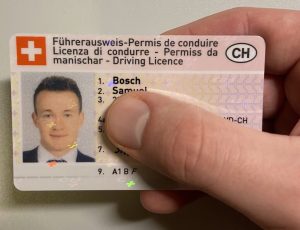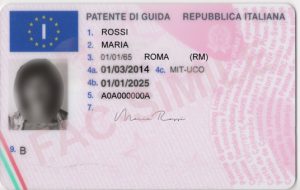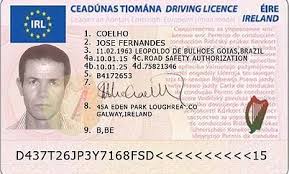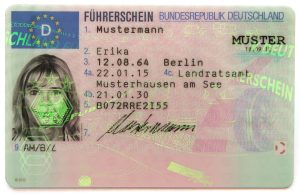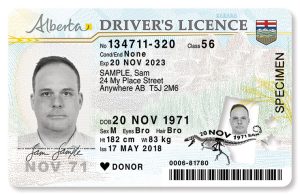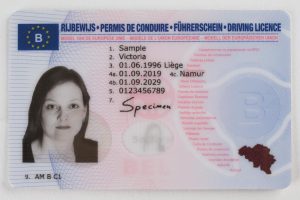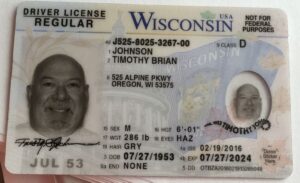Ace Your Written Knowledge Test for a United States Driver's License
Obtaining a United States Driver’s License is an exciting milestone, granting you the freedom and independence to explore the open roads. However, before embarking on this journey, you must first pass the written knowledge test. We understand that preparing for the test can feel overwhelming, but fear not! Our website is here to provide you with the essential tips, resources, and practice materials needed to excel in your upcoming examination.
Understanding the Test Format for the Written Knowledge Test of a United States Driver's License
Understand information about the test’s structure and components. Let’s dive in!
Multiple-Choice Questions: The written knowledge test primarily consists of multiple-choice questions. You’ll be presented with a question and several answer options, requiring you to select the correct answer. This format assesses your knowledge of traffic laws, road signs, and safe driving practices.
2. Test Duration: The test duration varies by state or jurisdiction. You’ll have a specific time limit to complete the test, so time management is crucial. Allocate sufficient time for each question to ensure careful consideration of your answers.
3. Question Topics: The test covers various driving and road safety topics, including traffic laws, right-of-way rules, speed limits, parking regulations, emergency situations, and road sign recognition. Thoroughly studying and understanding these topics is essential for performing well on the test.
4. Passing Score: Each state sets its own passing score, typically requiring a specific percentage of correct answers. Familiarize yourself with your state’s passing requirements to ensure you meet the criteria.
5. Study Materials: Utilize study materials provided by your state’s Department of Motor Vehicles (DMV) or licensing authority to excel in the test. The driver’s manual is an excellent resource, covering necessary information such as traffic laws, road rules, and state-specific road signs. Additionally, online resources, practice tests, and mobile apps can supplement your studies.
6. Test Administration: The written knowledge test is typically administered by the DMV or authorized testing centers. You’ll need to visit a designated location to take the test. Some states offer online testing options for added convenience. Check with your state’s DMV for specific details and requirements.
7. Retesting Opportunities: If you don’t pass the written knowledge test on your first attempt, most states provide opportunities for retesting. Be aware of any waiting periods or limitations imposed by your state. Use this chance to review and reinforce your knowledge before attempting the test again.
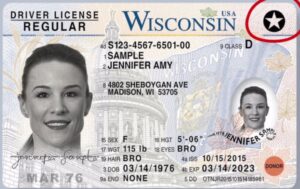
Study the United States Driver's License Manual - Your Key to Success
Understanding the driver’s manual is essential for mastering the rules of the road, traffic laws, and road sign recognition:
Importance of the United States Driver’s License Manual: The United States Driver’s License manual is a comprehensive guide provided by your state’s Department of Motor Vehicles (DMV) or licensing authority. It contains vital information about traffic laws, road rules, safe driving practices, and specific regulations in your state. Studying the driver’s manual is crucial as it forms the foundation of your knowledge for the written knowledge test.
2. Structure and Organization: The United States Driver’s License manual is typically organized into chapters that cover different aspects of driving. It may include topics such as traffic signs and signals, right-of-way rules, parking regulations, handling emergencies, and more. Familiarize yourself with the manual’s structure to navigate through the content effectively.
3. Read and Understand: Start by thoroughly reading each chapter of the driver’s manual. Take your time to understand the concepts, laws, and guidelines presented. Highlight important points, key definitions, and traffic regulations to aid your comprehension and retention.
4. Visual Learning: The driver’s manual often includes visual aids such as diagrams, illustrations, and images of road signs. Pay close attention to these visuals as they provide valuable information about road signs, traffic signals, and road markings. Visual learning can enhance your understanding and help you recognize these vital elements during the written knowledge test.
5. Take Notes: While studying the driver’s manual, take organized notes to summarize key information and reinforce your understanding. Use bullet points, charts, or diagrams to condense complex concepts into easily digestible formats. Reviewing your notes regularly will aid in retention and recall.
6. Practice Questions: Many United States Driver’s License manuals include practice questions at the end of each chapter or in a separate section. These questions allow you to assess your knowledge and gauge your readiness for the written knowledge test. Answer the practice questions and review the explanations to strengthen your understanding of the material.
7. Online Resources: In addition to the United States Driver’s License manual, utilize online resources provided by your state’s DMV or reputable educational websites. These resources often offer interactive quizzes, practice tests, and supplemental materials to further enhance your knowledge and test preparation.
Utilize Online Resources for a United States Driver's License - Enhance Your Test Preparation
We understand the importance of leveraging online tools and materials to reinforce your understanding of traffic laws, road signs, and safe driving practices:
Official DMV Websites: Start by visiting your state’s official Department of Motor Vehicles (DMV) website. These websites often provide valuable resources specifically tailored to your state’s driver’s license requirements. Look for sections dedicated to driver’s education, practice tests, and study materials. These resources are reliable and ensure you’re studying the most relevant and up-to-date information.
2. Interactive Quizzes and Practice Tests: Many online platforms offer interactive quizzes and practice tests designed to simulate the actual written knowledge exam. These resources allow you to assess your knowledge, identify areas that need improvement, and get a feel for the test format. Take advantage of these quizzes and tests to gain familiarity with the types of questions you may encounter.
3. Mobile Apps: Mobile apps can be convenient and accessible study tools. Explore the app stores for driver’s education apps or DMV-specific apps that offer study materials, flashcards, practice tests, and even road sign recognition exercises. These apps allow you to study on the go, making efficient use of your time and providing a convenient way to reinforce your knowledge.
4. Educational Websites: Reputable educational websites dedicated to driver’s education often offer comprehensive study guides, tutorials, and practice questions. Browse these websites for additional study materials, step-by-step explanations, and visual aids that can enhance your understanding of traffic laws and road signs. Look for websites that are trusted and frequently updated to ensure accuracy.
5. Online Forums and Study Groups: Engaging in online forums and study groups can provide a collaborative learning experience. Connect with fellow test-takers, share study tips, ask questions, and discuss challenging topics. Participating in these communities can provide valuable insights and support as you prepare for the written knowledge test.
6. Video Tutorials and Webinars: Video tutorials and webinars can be engaging and effective study resources. Look for online platforms or YouTube channels that offer instructional videos on traffic laws, road signs, and driving techniques. These visual resources can clarify complex concepts, demonstrate real-life scenarios, and enhance your understanding.
7. Social Media: Follow social media accounts or join groups dedicated to driver’s education. Many accounts provide bite-sized information, quick tips, and visual content related to traffic laws and road safety. By incorporating driver’s education content into your social media feed, you can passively reinforce your knowledge while scrolling through your favorite platforms.
United States Driver's License and Others for Sale
Take Practice Tests for a United States Driver's License
Practice tests are invaluable tools that help you assess your knowledge, familiarize yourself with the test format, and identify areas that need improvement:
Importance of Practice Tests: Practice tests simulate the actual written knowledge exam, allowing you to experience the test environment and gauge your readiness. They help you become familiar with the types of questions you may encounter, test your knowledge of traffic laws and road signs, and build confidence before the actual exam.
2. Online Practice Tests: Numerous online platforms offer practice tests specifically designed for driver’s license written knowledge exams. These tests are often based on real exam questions and cover various topics such as traffic laws, road signs, and safe driving practices. Seek out reputable websites or official DMV resources that provide accurate and up-to-date practice tests.
3. Time Management: When taking practice tests, simulate the actual test conditions by allocating a specific amount of time to complete the exam. This helps you practice time management skills and ensures you’re able to answer all questions within the allotted time. Pay attention to the clock and pace yourself accordingly.
4. Review Incorrect Answers: After completing a practice test, thoroughly review the questions you answered incorrectly. Understand the correct answers and the rationale behind them. Use this opportunity to reinforce your knowledge in areas where you struggled and make note of the concepts you need to revisit in your study sessions.
5. Track Your Progress: Keep a record of your practice test scores and monitor your progress over time. This allows you to identify patterns, track improvements, and focus on areas that require additional attention. Tracking your progress provides motivation and helps you stay accountable to your study goals.
6. Variety of Practice Tests: Seek out a variety of practice tests to ensure a comprehensive review of the exam topics. Look for tests that cover different question formats, including multiple-choice questions, true/false statements, and road sign identification. Diversifying your practice tests exposes you to different question styles, enhancing your overall understanding.
7. Simulate Test Conditions: To get the most accurate assessment of your readiness, simulate the test conditions as closely as possible. Find a quiet environment, eliminate distractions, and recreate the atmosphere you’ll encounter during the actual exam. This helps you become comfortable with the testing environment and reduces test-day anxiety.
Focus on Weak Areas - Strengthen Your United States Driver's License Knowledge
Identifying and addressing your weak areas is crucial for success in your driver’s license written knowledge exam:
Self-Assessment: Begin by conducting a self-assessment to identify your weak areas. Reflect on your performance in practice tests, quizzes, or previous study sessions. Pay attention to the topics or types of questions you consistently struggle with. By recognizing your weak areas, you can develop a targeted study plan to address them.
2. Analyze Mistakes: When reviewing your practice tests or quizzes, carefully analyze the questions you answered incorrectly. Understand the reasons behind your mistakes. Was it a lack of knowledge, misinterpretation, or a simple oversight? By pinpointing the root cause of your errors, you can tailor your study approach accordingly.
3. Prioritize Weak Areas: Once you’ve identified your weak areas, prioritize them in your study plan. Allocate more time and resources to these topics to give them the attention they require. By focusing on your weaknesses, you can gradually turn them into strengths and improve your overall performance.
4. Study Material: Seek out study materials that specifically address your weak areas. Look for resources such as targeted chapters in the driver’s manual, online tutorials, or educational websites that provide in-depth explanations and examples related to the topics you struggle with. Utilizing relevant study material ensures you’re concentrating on the right content.
5. Practice and Reinforce: Repetition is key to reinforcing your knowledge in weak areas. Engage in targeted practice sessions that specifically focus on the topics you find challenging. Take advantage of online quizzes, flashcards, or practice questions that emphasize the areas you need to strengthen. Regular practice will enhance your understanding and boost your confidence.
6. Seek Additional Help: If you’re still struggling with certain concepts or topics, don’t hesitate to seek additional help. Consider enrolling in a driver’s education course, hiring a tutor, or seeking guidance from knowledgeable individuals such as driving instructors or experienced drivers. Their expertise and personalized assistance can provide valuable insights and clarification.
7. Progress Tracking: Regularly assess your progress in your weak areas. Keep track of your performance in practice tests, quizzes, or study sessions. Notice the improvements you make over time and celebrate your achievements. Progress tracking serves as motivation and helps you stay committed to your goal of strengthening your driver’s knowledge.
Create Flashcards for a United States Driver's License - Boost Your Learning and Retention
Flashcards are a powerful study tool that can enhance your understanding of key concepts, reinforce your memory, and facilitate quick recall:
Choose Key Information: When creating flashcards, focus on the most essential information that you need to learn and remember. Identify key terms, definitions, formulas, or important facts related to your subject matter. By narrowing down the content to the crucial details, you create concise and effective flashcards.
2. Use Clear and Simple Language: Keep your flashcards simple and easy to understand. Use plain language and avoid complex jargon or lengthy explanations. Use short sentences or bullet points to convey the information clearly. Remember, the purpose of flashcards is quick and effortless learning.
3. Visual Elements: Incorporate visual elements into your flashcards whenever applicable. Use images, diagrams, or symbols to represent concepts or aid in memory recall. Visual cues can be highly effective in triggering associations and making the information more memorable.
4. Two-Sided Flashcards: Consider using two-sided flashcards to maximize the available space. Write the question or keyword on one side and the corresponding answer or explanation on the other side. This format allows you to quiz yourself and test your knowledge from different angles.
5. Categorize and Organize: Group your flashcards into categories or topics to facilitate organized studying. This helps you focus on specific areas and prevents overwhelming information overload. Use dividers or color-coded tabs to easily distinguish between different sections.
6. Review and Repetition: Regularly review your flashcards to reinforce your learning. Dedicate specific study sessions to go through your flashcards, testing your memory and understanding. Repeat the process multiple times to strengthen your retention.
7. Digital Flashcards: Consider using digital flashcard platforms or mobile apps that offer virtual flashcards. These tools provide the convenience of studying on-the-go, tracking your progress, and even incorporating interactive features such as quizzes or games. Explore the options available and find a digital solution that suits your preferences.
Join Study Groups - Collaborative Learning for a United States Driver's License
Study groups offer a valuable opportunity to exchange knowledge, discuss challenging concepts, and gain new perspectives:
Find Like-Minded Peers: Look for students who share your academic goals and dedication. Seek out individuals who are motivated, committed, and eager to learn. Connecting with like-minded peers creates a supportive and engaging study environment.
2. Establish Common Goals: Before joining a study group, establish common goals and objectives. Discuss the subjects or topics you wish to focus on, and ensure everyone is aligned with the group’s purpose. Having a clear direction helps keep the study sessions focused and productive.
3. Share Resources and Insights: Study groups thrive on collective knowledge. Share study materials, resources, and insights with one another. Each member can contribute unique perspectives, notes, or references, enriching the learning experience for everyone.
4. Active Participation: Actively participate in study group discussions and activities. Engage in meaningful conversations, ask questions, and provide explanations. Actively contributing to the group fosters a dynamic learning environment and encourages everyone to stay involved.
5. Divide and Conquer: Divide study topics or tasks among group members. Assign each person a specific area to become an expert in, and then share their knowledge with the rest of the group. This approach allows for in-depth coverage of the material and enhances overall comprehension.
6. Regular Meetings: Schedule regular study group meetings to maintain consistency and accountability. Establish a convenient meeting time and place that works for everyone. Consistent meetings ensure that progress is made, questions are answered, and collaboration remains ongoing.
7. Support and Encouragement: Study groups provide a supportive network where members can motivate and encourage one another. Celebrate achievements, offer assistance when someone is struggling, and provide positive reinforcement. A supportive study group cultivates a positive learning environment.
Stay Calm and Rested - Keys to Optimal Performance for a United States Driver's License
In today’s fast-paced world, it’s essential to prioritize self-care and well-being to achieve success:
Practice Stress Management: Stress can hinder your performance and overall well-being. Incorporate stress management techniques into your daily routine. This can include activities such as meditation, deep breathing exercises, mindfulness, or engaging in hobbies that help you relax and unwind. Managing stress promotes a calm state of mind.
2. Prioritize Sleep: Quality sleep is vital for cognitive function, memory consolidation, and overall health. Establish a consistent sleep schedule and aim for 7-9 hours of sleep each night. Create a sleep-friendly environment by keeping your bedroom dark, quiet, and at a comfortable temperature. Prioritizing sleep enhances your ability to stay focused and perform at your best.
3. Take Breaks: Allow yourself regular breaks throughout the day to recharge and rejuvenate. Continuous work without breaks can lead to mental fatigue and decreased productivity. Take short walks, stretch, or engage in activities that divert your attention from work. Breaks help maintain mental clarity and prevent burnout.
4. Time Management: Effective time management reduces stress and allows for adequate rest. Prioritize tasks, set realistic goals, and create a schedule that accommodates both work and leisure activities. Avoid overloading your schedule and leave room for relaxation and self-care. Balancing your time promotes a sense of calm and prevents unnecessary stress.
5. Healthy Lifestyle: A healthy lifestyle contributes to both physical and mental well-being. Eat nutritious meals, stay hydrated, and engage in regular physical activity. Exercise releases endorphins, which elevate mood and reduce stress. A healthy body supports a healthy mind, allowing you to stay calm and focused.
6. Disconnect from Technology: Constant exposure to screens and digital devices can disrupt sleep patterns and increase stress levels. Set boundaries with technology by establishing device-free periods. Prioritize activities such as reading, spending time outdoors, or engaging in hobbies that don’t involve screens. Disconnecting from technology promotes relaxation and mental clarity.
7. Seek Support: Don’t hesitate to seek support from friends, family, or professionals when needed. Reach out to trusted individuals who can provide guidance, encouragement, or simply lend a listening ear. Connecting with others helps alleviate stress and provides a sense of support.
Where to Buy a United States Driver's License on the Dark Web
If you are looking to buy fake documents on the dark net, Darknetdocuments.com is known to provide the best novelty documents with very high quality which you won’t find anywhere else on the dark web. Contact us now for best deals through any of the following contact information;
- Whatsapp: +1 415 937 8544
- Telegram: +1 415 937 8544
Conclusion
Remember, the key to success in the written knowledge test is preparation. Dedicate ample time to study, use a variety of resources, and practice regularly. Aim for a comprehensive understanding of traffic laws, road signs, and safe driving practices.
If you have further questions or need more detailed information, please explore the other sections of our website or reach out to us directly. We are here to support you throughout your driver’s license application process.
Sources:
In order to come up with this beautiful peace of write up, we read and copied some contents from other amazing writers/bloggers. Below is a list of sources we used;

